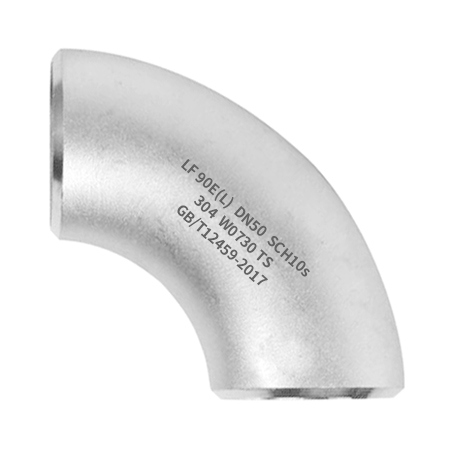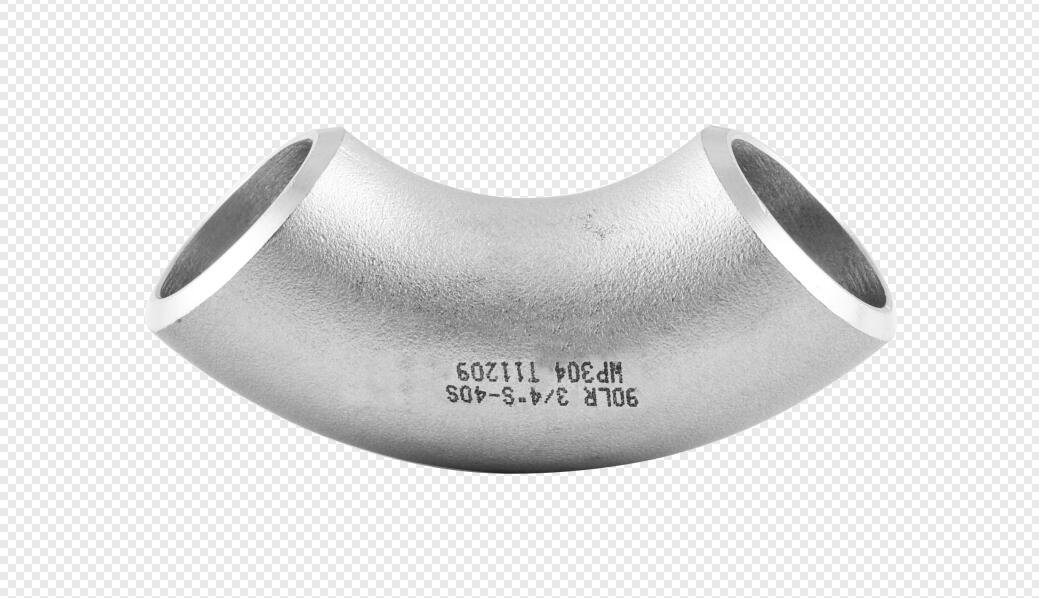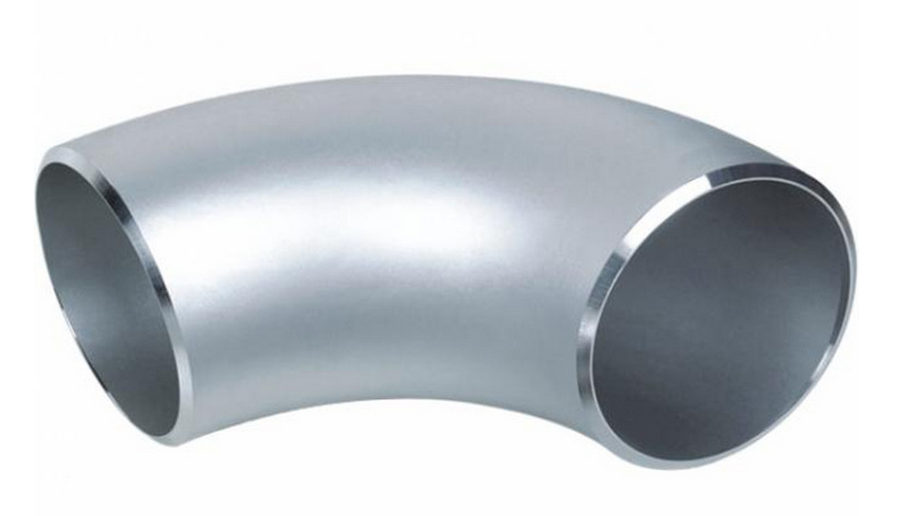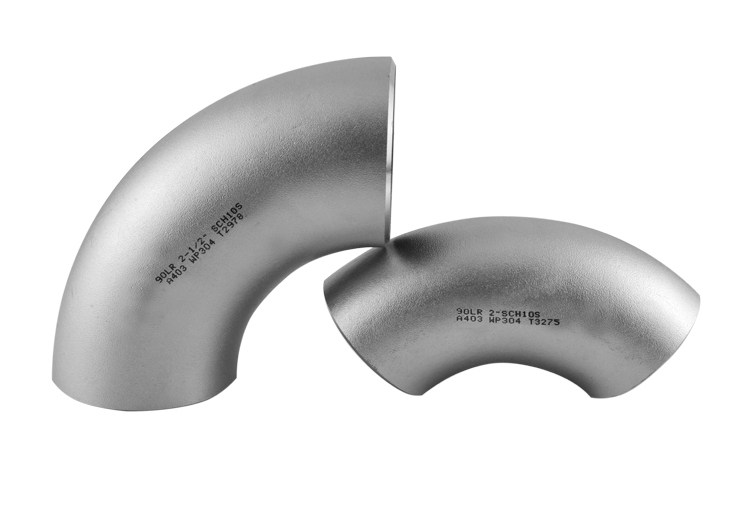Classification of stainless steel elbows
What is stainless steel elbows used for?
Stainless steel elbow material specifications
Classification of stainless steel elbows
How to choose stainless steel elbow
stainless steel elbow
A stainless steel elbow is a type of pipe fitting used to change the direction of fluid flow in a piping system.
It is made from stainless steel, which is an alloy primarily consisting of iron, chromium, nickel, and other elements that provide corrosion resistance and durability.
Stainless steel elbows are commonly used in various industries, including chemical processing, food and beverage, pharmaceuticals, and petrochemicals, where corrosion resistance is crucial.
The selection of the appropriate stainless steel grade and specifications depends on the specific requirements of the application, including temperature, pressure, and the type of fluid being transported.
Standards such as ASTM A403/A403M are often referenced for stainless steel pipe fittings, including elbows.

What is stainless steel elbow used for?
Stainless steel elbows are used to redirect the flow of fluids in piping systems.
They are crucial components in various industries, providing corrosion resistance and maintaining hygiene standards.
Common applications include chemical processing, food and beverage production, pharmaceuticals, and water treatment, where durability and resistance to corrosion are essential.
The elbows facilitate changes in the direction of fluid flow, helping to navigate around obstacles and ensuring efficient and reliable operation of the piping system.

Stainless steel elbow material specifications
| Stainless Steel Elbow Material Specifications | Description and Application |
|---|---|
| ASTM A403/A403M | Standard specification for wrought austenitic stainless steel piping fittings. Covers seamless and welded elbows, tees, reducers, and other fittings intended for high-temperature and corrosive service. Common grades include 304, 304L, 316, 316L. |
| ASTM A815/A815M | Standard specification for wrought ferritic, ferritic/austenitic, and martensitic stainless steel alloy elbow fittings of seamless and welded construction. Intended for corrosive and high-temperature environments. Common grades include Duplex and Super Duplex stainless steels. |
| EN 10253-4 | European standard specifying technical delivery conditions for seamless and welded stainless steel elbows for pressure purposes. Covers various grades, including austenitic, ferritic, and martensitic stainless steels. |
| ASME B16.9 | Standard covering overall dimensions, tolerances, ratings, testing, and markings for wrought butt-welding stainless steel elbow fittings. Used in various industries for connecting and changing the direction of stainless steel pipes. |
| DIN 2605 | German standard specifying seamless and welded stainless steel elbows for use at elevated temperatures. Includes dimensions, tolerances, and materials requirements. |
| JIS B2311/B2312/B2313 | Japanese Industrial Standards covering steel butt-welding pipe fittings, including stainless steel elbows. Specifies dimensions, tolerances, and materials for seamless and welded elbows. |
These specifications outline the requirements for manufacturing stainless steel elbows, covering aspects such as material composition, dimensions, and intended applications.
It’s important to select the appropriate specification based on the specific needs of the piping system and the environmental conditions it will encounter.

Classification of stainless steel elbows
Stainless steel elbows are classified based on various factors, including their shape, radius, and intended applications. Here are common classifications:
Based on Shape:
Long Radius Elbows (LR): These elbows have a longer center-to-end distance, providing a smoother flow path and less resistance to fluid flow. They are commonly used in applications where flow efficiency is crucial.
Short Radius Elbows (SR): Short radius elbows have a shorter center-to-end distance, making them more compact. They are preferred in tight spaces or when a more abrupt change in direction is acceptable.
Based on Radius of Curvature:
1.5D Elbows: The center-to-end distance is 1.5 times the nominal pipe diameter. These are standard long radius elbows.
3D Elbows: The center-to-end distance is 3 times the nominal pipe diameter. These are long radius elbows used in applications where reduced pressure drop is critical.
5D Elbows: The center-to-end distance is 5 times the nominal pipe diameter. These are long radius elbows suitable for applications with stringent flow requirements.
Based on Manufacturing Standards:
ASME B16.9 Elbows: These elbows conform to the standards set by the American Society of Mechanical Engineers (ASME). They cover overall dimensions, tolerances, ratings, testing, and markings for wrought butt-welding fittings, including elbows.
DIN Standard Elbows: Conforming to German standards (DIN), these elbows are widely used in Europe. They specify dimensions, tolerances, and materials for seamless and welded elbows.
JIS Standard Elbows: Japanese Industrial Standards (JIS) specify dimensions, tolerances, and materials for steel butt-welding pipe fittings, including stainless steel elbows.
Based on Material Grade:
304 Stainless Steel Elbows: Made from the common austenitic stainless steel grade 304, suitable for general-purpose applications.
316 Stainless Steel Elbows: Fabricated from the corrosion-resistant austenitic stainless steel grade 316, ideal for applications where corrosion resistance is crucial.
Duplex Stainless Steel Elbows: These elbows are made from duplex stainless steel, known for its enhanced strength and corrosion resistance. Common grades include 2205 and 2507.
Based on Connection Ends:
Butt Weld Elbows: These elbows are welded directly to the pipe using the butt welding process.
Threaded Elbows: Featuring threaded ends, these elbows can be screwed onto pipes or fittings.
Socket Weld Elbows: Designed for socket welding, these elbows have a socket at one end to facilitate pipe connection.
Each classification serves specific purposes, and the choice depends on factors such as the fluid flow requirements, space constraints, and environmental conditions of the application.

How to choose stainless steel elbow
Choosing the right stainless steel elbow involves considering several factors to ensure it meets the specific requirements of your piping system. Here are key considerations:
Material Grade:
Select the appropriate stainless steel grade based on the environmental conditions and the fluid being transported. Common grades include 304, 316, and duplex stainless steels.
Application and Service Conditions:
Consider the specific application and service conditions, including temperature, pressure, and the nature of the fluid. Some environments, such as corrosive or high-temperature conditions, may require specific stainless steel alloys.
Elbow Type and Radius:
Choose between long radius (LR) and short radius (SR) elbows based on space constraints and flow requirements. Long radius elbows are suitable for applications where a smooth flow path is crucial, while short radius elbows are more compact.
Radius of Curvature:
Consider the radius of curvature (e.g., 1.5D, 3D, 5D) based on pressure drop considerations and flow requirements. Longer radius elbows tend to result in lower pressure drop.
Manufacturing Standards:
Ensure the stainless steel elbow complies with relevant manufacturing standards, such as ASME B16.9, DIN, or JIS, depending on your region and industry standards.
Connection Ends:
Choose the appropriate connection ends for your piping system. Butt weld elbows are welded directly to the pipe, threaded elbows are screwed onto pipes, and socket weld elbows are designed for socket welding.
Corrosion Resistance:
Assess the corrosion resistance requirements of your application. If the system will be exposed to corrosive substances, choose a stainless steel grade with high corrosion resistance, such as 316 or duplex stainless steel.
Pressure Rating:
Ensure that the stainless steel elbow has the appropriate pressure rating for your system. Consider factors like operating pressure and potential pressure surges.
Size and Dimensions:
Select the right size and dimensions of the elbow based on the nominal pipe size (NPS) and schedule of your piping system.
Cost Considerations:
Consider the overall cost, including the purchase price, installation costs, and potential maintenance expenses. Sometimes, choosing a higher-grade stainless steel may be more cost-effective in the long run due to increased durability.
Supplier Reputation:
Choose a reputable supplier with a track record of providing high-quality stainless steel elbow. Consider factors such as product certifications, testing, and customer reviews.
By carefully considering these factors, you can ensure that the stainless steel elbow you choose is well-suited for your specific application, providing reliable and long-lasting performance.
